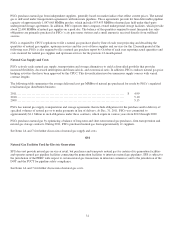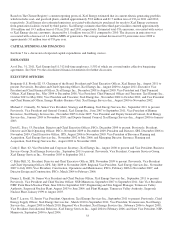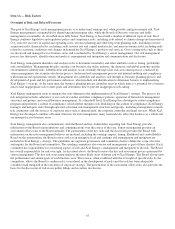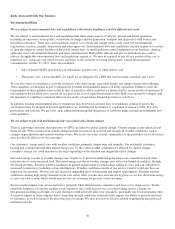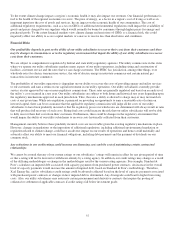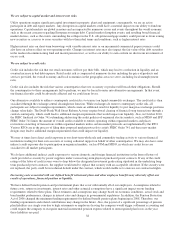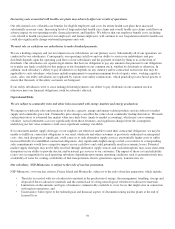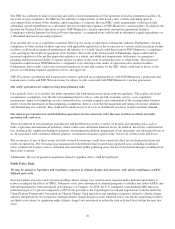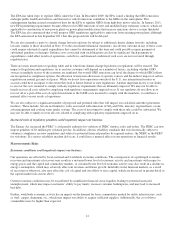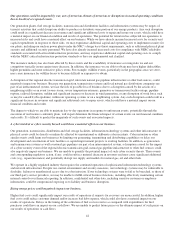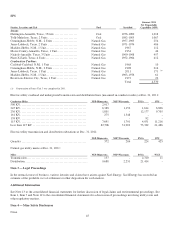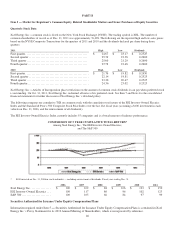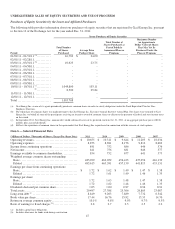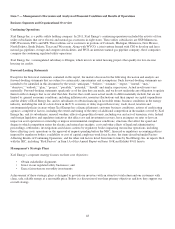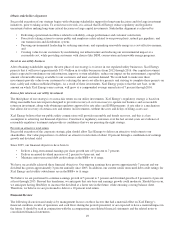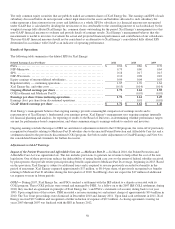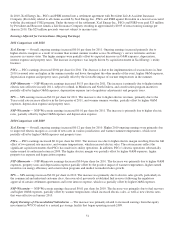Xcel Energy 2011 Annual Report Download - page 51
Download and view the complete annual report
Please find page 51 of the 2011 Xcel Energy annual report below. You can navigate through the pages in the report by either clicking on the pages listed below, or by using the keyword search tool below to find specific information within the annual report.41
The EPA has taken steps to regulate GHGs under the CAA. In December 2009, the EPA issued a finding that GHG emissions
endanger public health and welfare, and that motor vehicle emissions contribute to the GHGs in the atmosphere. This
endangerment finding created a mandatory duty for the EPA to regulate GHGs from light duty motor vehicles. In January 2011,
new EPA permitting requirements became effective for GHG emissions of new and modified large stationary sources, which are
applicable to construction of new power plants or power plant modifications that increase emissions above a certain threshold.
The EPA has also announced that it will propose GHG regulations applicable to emissions from existing power plants, although
the EPA announced in late September 2011 that this proposed rule will be delayed.
We are also currently a party to climate change lawsuits and may be subject to additional climate change lawsuits, including
lawsuits similar to those described in Note 13 to the consolidated financial statements. An adverse outcome in any of these cases
could require substantial capital expenditures that cannot be determined at this time and could possibly require payment of
substantial penalties or damages. Defense costs associated with such litigation can also be significant. Such payments or
expenditures could affect results of operations, cash flows, and financial condition if such costs are not recovered through
regulated rates.
There are many uncertainties regarding when and in what form climate change legislation or regulations will be enacted. The
impact of legislation and regulations, on us and our customers will depend on a number of factors, including whether GHG
sources in multiple sectors of the economy are regulated, the overall GHG emissions cap level, the degree to which GHG offsets
are recognized as compliance options, the allocation of emission allowances to specific sources and the indirect impact of carbon
regulation on natural gas and coal prices. While we do not have operations outside of the U.S., any international treaties or
accords could have an impact to the extent they lead to future federal or state regulations. Another important factor is our ability
to recover the costs incurred to comply with any regulatory requirements that are ultimately imposed. We may not be able to
timely recover all costs related to complying with regulatory requirements imposed on us. If our regulators do not allow us to
recover all or a part of the cost of capital investment or the O&M costs incurred to comply with the mandates, it could have a
material effect on our results of operations.
We are also subject to a significant number of proposed and potential rules that will impact our coal-fired and other generation
facilities. These include, but are not limited to, rules associated with emissions of SO2 and NOx, mercury, regional haze, ozone,
ash management and cooling water intake systems. The costs of investment to comply with these rules could be substantial. We
may not be able to timely recover all costs related to complying with regulatory requirements imposed on us.
Increased risks of regulatory penalties could negatively impact our business.
The Energy Act increased the FERC’s civil penalty authority for violation of FERC statutes, rules and orders. The FERC can now
impose penalties of $1 million per violation per day. In addition, electric reliability standards that were historically subject to
voluntary compliance are now mandatory and subject to potential financial penalties by regional entities, the NERC or the FERC
for violations. If a serious reliability incident did occur, it could have a material effect on our operations or financial results.
Macroeconomic Risks
Economic conditions could negatively impact our business.
Our operations are affected by local, national and worldwide economic conditions. The consequences of a prolonged economic
recession and uncertainty of recovery may result in a sustained lower level of economic activity and uncertainty with respect to
energy prices and the capital and commodity markets. A sustained lower level of economic activity may also result in a decline in
energy consumption, which may adversely affect our revenues and future growth. Instability in the financial markets, as a result
of recession or otherwise, also may affect the cost of capital and our ability to raise capital, which are discussed in greater detail in
the capital market risk section above.
Current economic conditions may be exacerbated by insufficient financial sector liquidity leading to potential increased
unemployment, which may impact customers’ ability to pay timely, increase customer bankruptcies, and may lead to increased
bad debt.
Further, worldwide economic activity has an impact on the demand for basic commodities needed for utility infrastructure, such
as steel, copper, aluminum, etc., which may impact our ability to acquire sufficient supplies. Additionally, the cost of those
commodities may be higher than expected.


